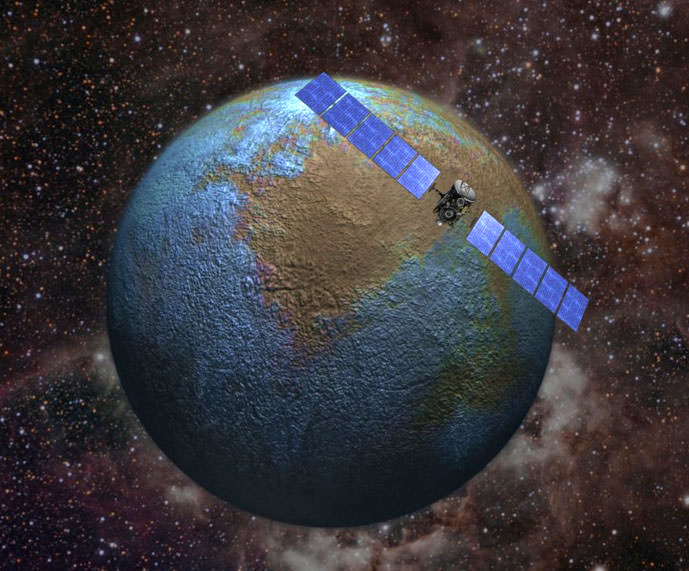On March 6, the Dawn spacecraft will ease into orbit around the dwarf planet Ceres. This is the visit to a dwarf planet (New Horizons will flyby Pluto later this year) and scientists are eager to see its surface in detail. But did you know that Ceres got its name from the ancient Roman goddess of agriculture and grain crops? Think about that when you enjoy your breakfast!
As we mentioned in our
previous article
about the intriguing white spots that Dawn has seen on Ceres as it makes its approach, Dawn will then continue to spiral its way down to an altitude of about 920 miles (1,480 kilometers), and in August 2015 will begin a two-month phase known as the high-altitude mapping orbit. Then, it will spiral down to an altitude of about 2,750 miles (4,430 kilometers), and obtain more science data in its survey science orbit. This phase will last for 22 days, and is designed to obtain a global view of Ceres with Dawn's framing camera, and global maps with the visible and infrared mapping spectrometer (VIR).
Dawn will then continue to spiral its way down to an altitude of about 920 miles (1,480 kilometers), and in August 2015 will begin a two-month phase known as the high-altitude mapping orbit. During this phase, the spacecraft will continue to acquire near-global maps with the VIR and framing camera at higher resolution than in the survey phase. The spacecraft will also image in "stereo" to resolve the surface in 3-D.
Then, after spiraling down for two months, Dawn will begin its closest orbit around Ceres in late November, at a distance of about 233 miles (375 kilometers). The dance at low-altitude mapping orbit will be a long waltz -- three months -- and is specifically designed to acquire data with Dawn's gamma ray and neutron detector (GRaND) and gravity investigation. GRaND will reveal the signatures of the elements on and near the surface. The gravity experiment will measure the tug of the dwarf planet, as monitored by changes in the high-precision radio link to NASA's Deep Space Network on Earth.
Dawn's nominal mission to Ceres is expected to last for 16 months.
Find out more about the mission at the
Dawn website.
 Universe Today
Universe Today
